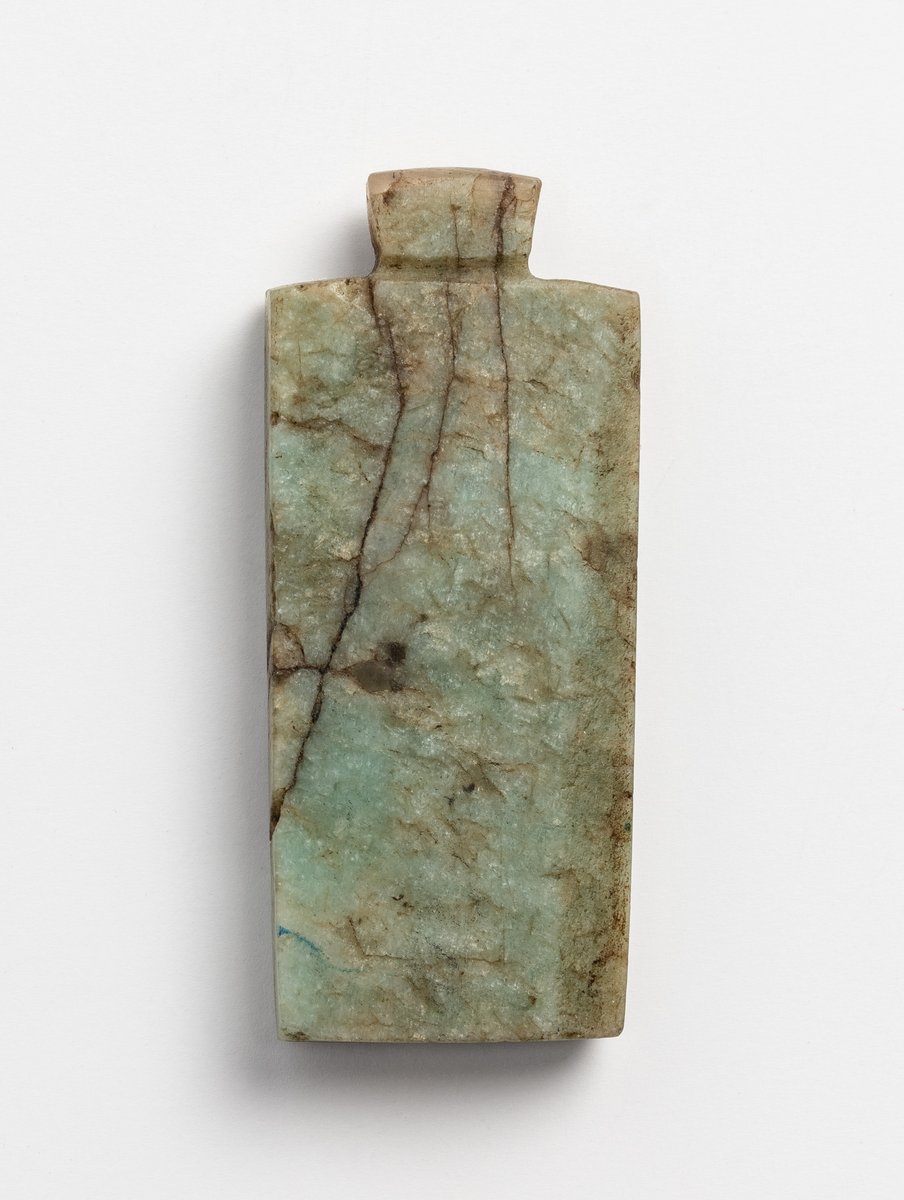
Writing Tablet Amulet
Egyptian Art
| Place of production | Egypt |
|---|---|
| Date | 3200–3000 B.C. |
| Object type | implements and utensils |
| Medium, technique | Mudstone |
| Dimensions | 22 × 12,2 × 1,1 cm |
| Inventory number | 60.4-E |
| Collection | Egyptian Art |
| On view | Museum of Fine Arts, Basement Floor, Ancient Egypt, Daily life |
The use of eye paints was especially common not only for women but also for men in order to enhance their beauty and to protect their users against the harmful rays of the sun and various eye diseases.
Typical artefacts of the predynastic material culture are the cosmetic palettes, used for grinding the raw materials for eye paints (malachite and galena) and for mixing them with animal fat, oil or resin. Depressions, grinding traces and pigments on the surfaces of the palettes clearly refer to this kind of use. The flat palettes were made of stone, generally of slate, as in the case of this palette, but limestone, granite or alabaster pieces are also well known.
The evolution of the cosmetic palettes can be best followed by the changing of their form. The most spectacular group of undecorated palettes consists of the theriomorphic pieces, which appeared in the material culture at the end of the Amratian phase of the Naqada culture (Ic), mainly in the form of turtles and fish. The present palette is a later version of the fish form type, with an almost straight bottom line, its emphasised dorsal fin resembling the natural fin. These palettes usually represent the so-called bulti fish, which was generally used as the symbol of rebirth and fertility.
This record is subject to revision due to ongoing research.